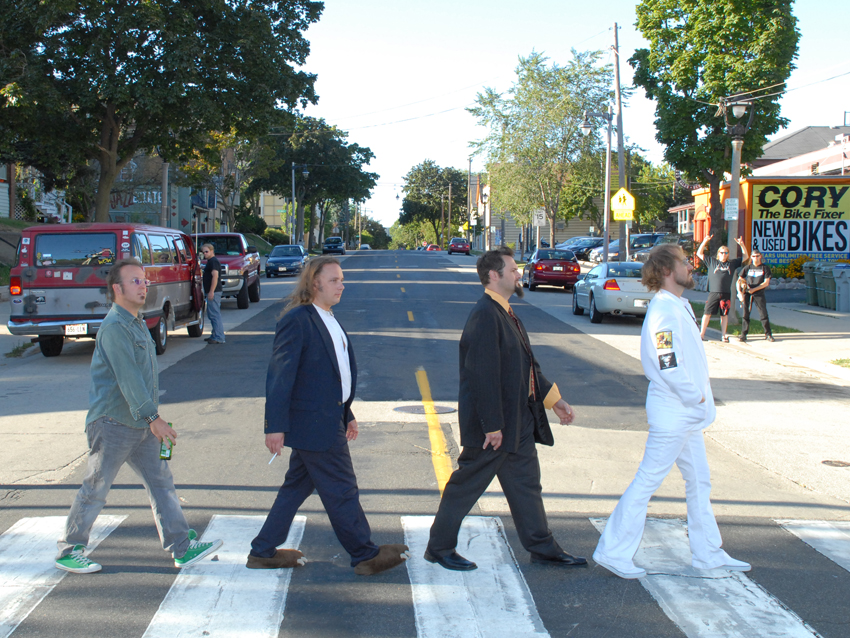
Beatallica's Jaymz Lenninfield talks Beatles/Metallica mash-ups on Abbey Load
“Are we parody?" asks Beatallica leader Jaymz Lennfield? "People have no idea what to call us. Is it tribute? Is it satire? We get all sorts of responses to what we do. Trying to wrap your melon around this band can be a pretty strange thing for a lot of people."
Count the folks at Sony/ATV Publishing, who own the rights to many of The Beatles' songs, among those asking such questions. Some years ago, the publishing giant sent a cease-and-desist notice to the Milwaukee-based humourists (which also includes members Grg III, Kliff McBurtney and Ringo Lars) after their popular Beatles/Metallica mash-ups first started appearing on the Internet.
The members of Metallica, however, got the joke, and once Lars Ulrich offered the services of their band's attorney to settle any disputes, it was agreed that Beatallica could continue with their merry ways. There was a cavaet, though: On the band's new album, Abbey Load, Beatallica serve up "Metallica-ized" versions of Beatles tunes with the original lyrics intact (on earlier releases, Lennfield and co. wrote their own lyrics, referencing both bands in highly comedic ways).
"If we had our way, we would have done Abbey Load with some of our own lyrics and some different musical passages," Lennfield says of the compromise. "But because we’re a team, and we have publishers that we need to have a decent relationship with, we did it this way."
For anyone who might be wondering about such things, the 14 cuts on Abbey Load are a superlative answer to musical question, "What would it sound like if Metallica covered The Beatles?" According to Lennfield, the balance between hilarious impersonation and heartfelt tribute is a tricky one.
“Playing these songs in a certain way requires finesse," he says, "and that’s why we have the people in the band that we do. To function in Beatallica, you have to have a real knowledge of both The Beatles and Metallica. I wouldn’t be in the band if I couldn’t do a certain impersonation. You can learn it to some degree, but it has to be in you."
So far, Beatallica haven't heard from surviving Beatles Paul McCartney or Ringo Starr, but Lennfield is hopeful: "I just saw that Paul McCartney is playing the Miller Park Stadium in July," he says, "so of course, the first thing that went through my mind was, ‘Hey, maybe he’s available for lunch...’ I'd be up for it!"
On the following pages, Lennfield talks about how Beatallica put a fresh, Metallica-like spin on five Beatles classics from Abbey Load.
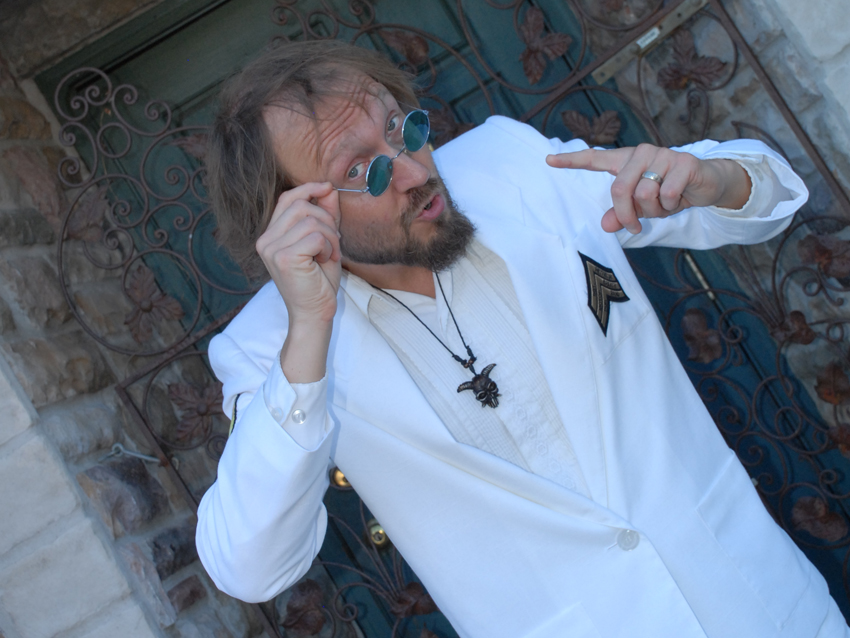
Come Together
“When we started to work on this song, we realized how heavy the album was going to be in comparison to the other ones we’ve done. When I go into the studio to record, I probably use about five or six different guitars, depending on what our engineer, Flemball, thinks would be good. I think I used a 1980s SG and a Les Paul on this one.
“I love this song. It’s a little darker than other Beatles’ songs. We started tweaking the octave vocal pattern on it. Initially, that wasn’t part of the equation, but we thought the vocals cut through more with the octave parts.
“Metallica-wise, you have to come at this song from a certain angle. If The Beatles are hitting a C whole note, and there’s a fluid four counts or whatever, then there’s an inflection you have to put on that with a chunky Metallica rhythm. There’s more to getting the songs across than a vocal impersonation or a guitar trill.”
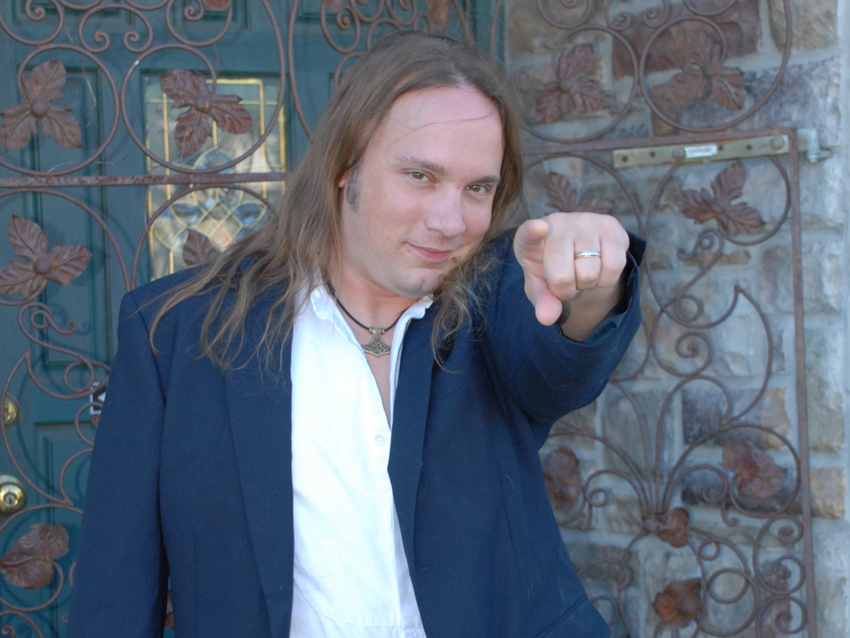
Michelle
“We put a little For Whom The Bell Tolls in there. This was a tricky one; it’s a little subversive of what we’re doing. If you listen to the chord progressions, you’re going to hear us go from E minor to a D second to an A minor seventh. Some of these other chord progressions that For Whom The Bell Tolls doesn’t have – I’m think of C minor seventh – these are all found in Michelle.
“This is a great example of how sometimes the songs do all the work for you. My vocal pattern fits over those chord progressions. We really didn’t tweak the chords. People will hear For Whom The Bell Tolls, but when you really dig down underneath… it’s Michelle. Strip the guitar flourishes and all the other stuff out of the way, and it’s there.”
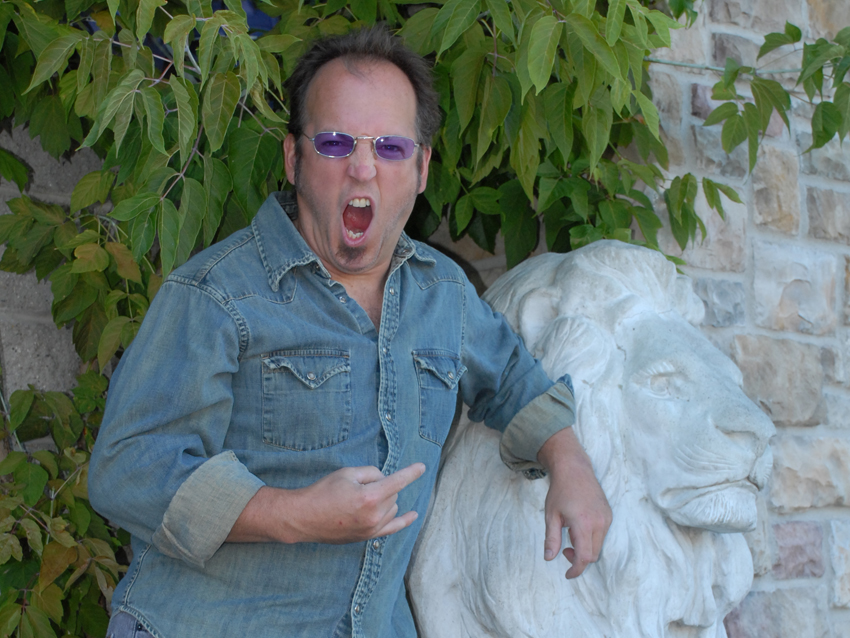
Please Please Me
“The big thing on this was the backing vocal sessions we had with Grg and Kliff. It was the two of them and me, and also Flemball, and we sat around in the booth and really discussed how to not lose the heaviness of the Metallica sound but stay true to that real sugary tone and vibe of the early ‘60s Beatles.
“We probably went through three or four different backing vocal patterns just to be able to keep that Beatles side to it. That element is so important to these songs, especially something from that era.
“On some of my rhythm guitar parts, I used an old Gretsch I have. It’s got a Telecaster body, but it’s actually a Gretsch-built guitar with single-coil pickups. I wasn’t looking for a dark, heavy EMG-style sound like I might normally go for; this one had to have a bit of twang and bite.”
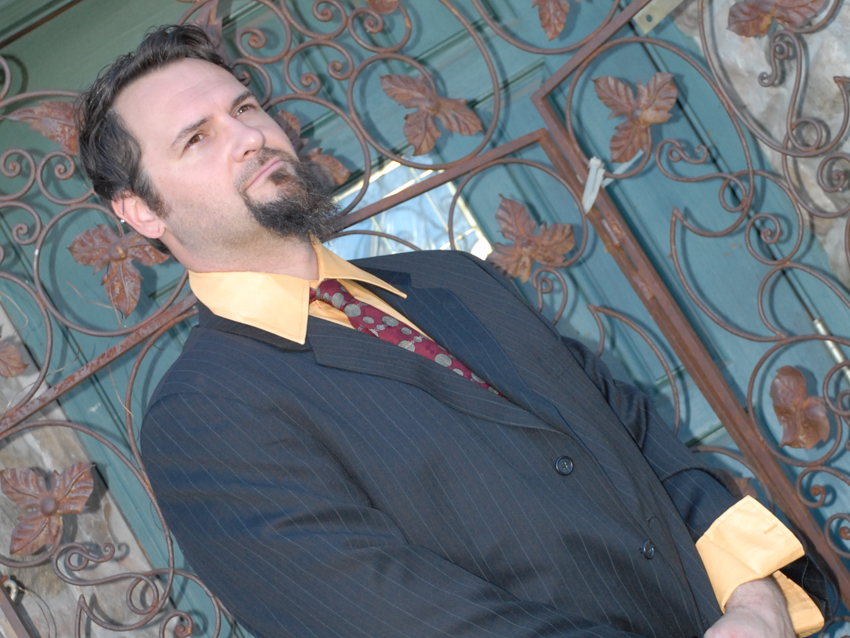
Polythene Pam
“I like this one. It was pretty easy. Some songs are just there, and you don’t have to overthink them. The Beatles’ original version of Polythene Pam from Abbey Road is so frenetic and exciting. It’s like the song Help! – both The Beatles’ version and Beatallica’s – you just live with them. Let the song do the work.
“I did certain inflections on it, of course, putting the Metallica feel to it. But the song is basically writing itself, so the smart thing to do is just stay out of the way. Same thing goes for the guitar solo at the end: you just crack open a cold one and let it roll.”

The End
“We did probably three drum sessions for this album. Ringo and Flemball are on record as saying that these were the easiest drum sessions for all of the Beatallica records, which is great to hear.
“You hear that original drum pattern that Ringo Starr is laying down, and then it goes into the guitar solos – again, do yourself a favor and don’t fight it. With Beatallica, people have to realize that you have to know when you’re doing too much.
“As The Beatles did, we traded solos, but we had some guest stars, too: Dave Newkid, our touring bassist, he’s on there, as is a guy named Marshall – he did a party fill-in gig with us, so we felt as though he merited a spot. It’s all about sharing the wealth.”

Joe is a freelance journalist who has, over the past few decades, interviewed hundreds of guitarists for Guitar World, Guitar Player, MusicRadar and Classic Rock. He is also a former editor of Guitar World, contributing writer for Guitar Aficionado and VP of A&R for Island Records. He’s an enthusiastic guitarist, but he’s nowhere near the likes of the people he interviews. Surprisingly, his skills are more suited to the drums. If you need a drummer for your Beatles tribute band, look him up.









